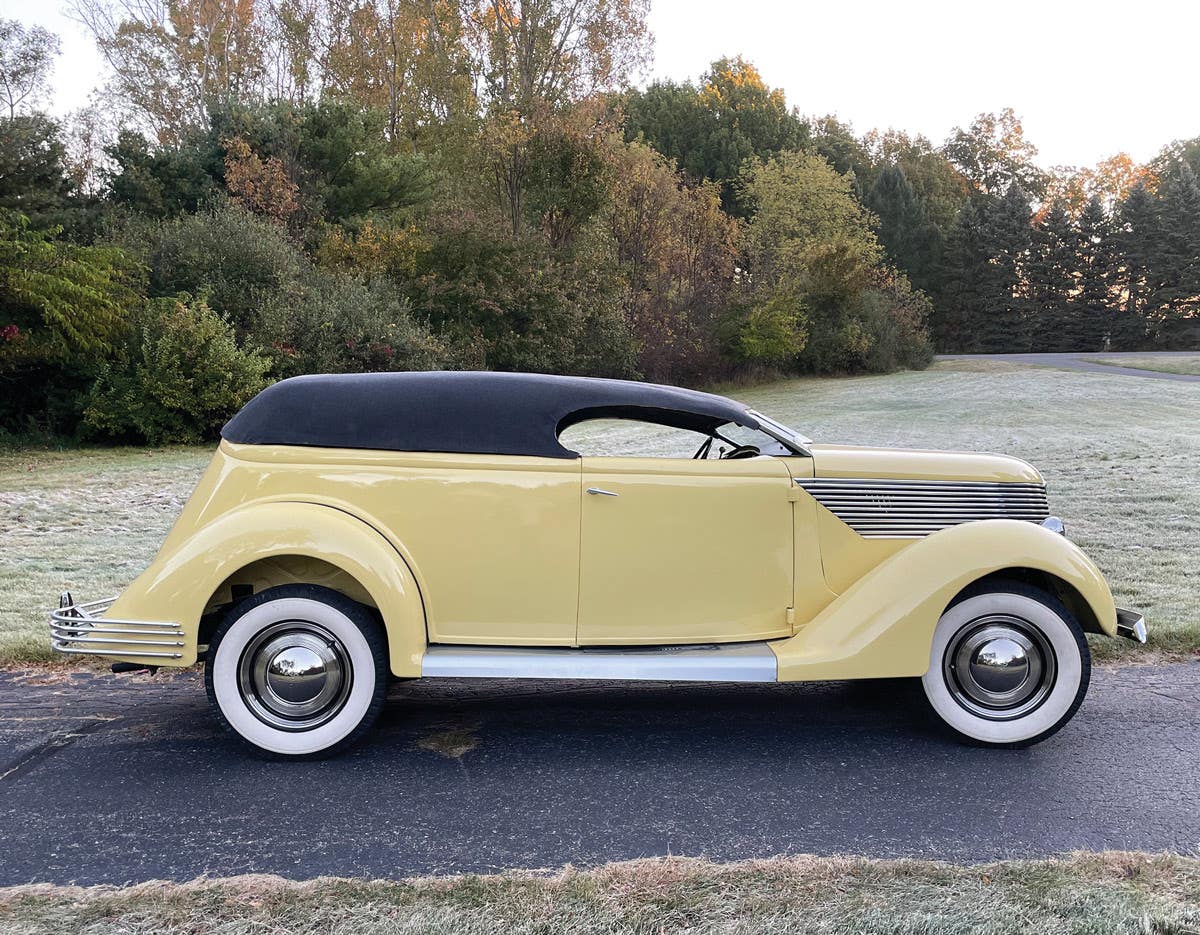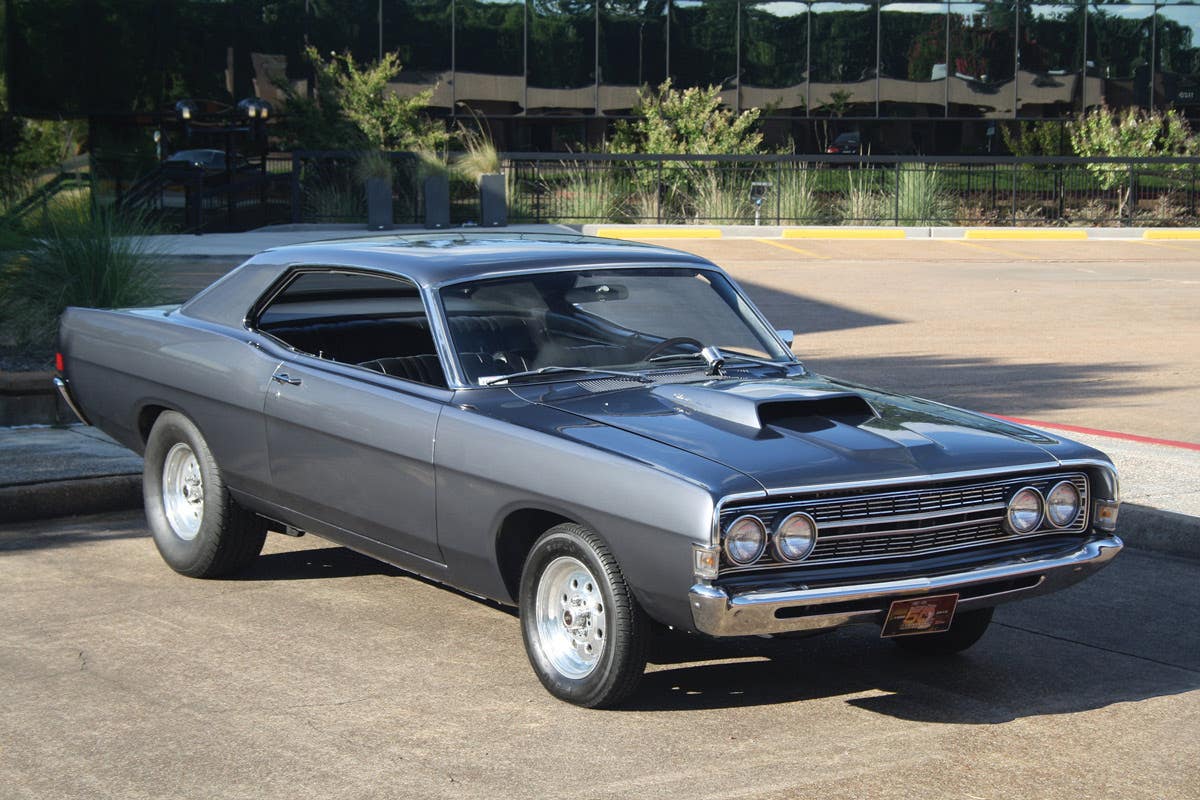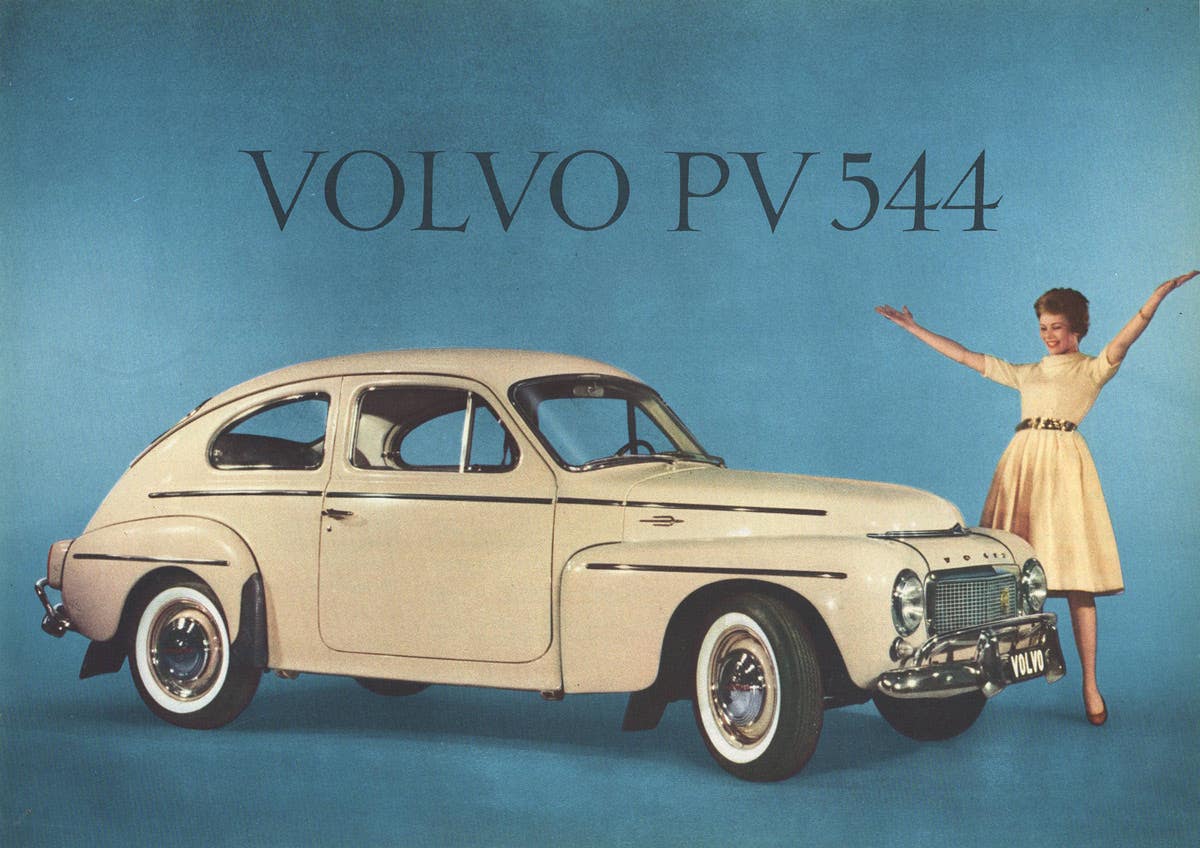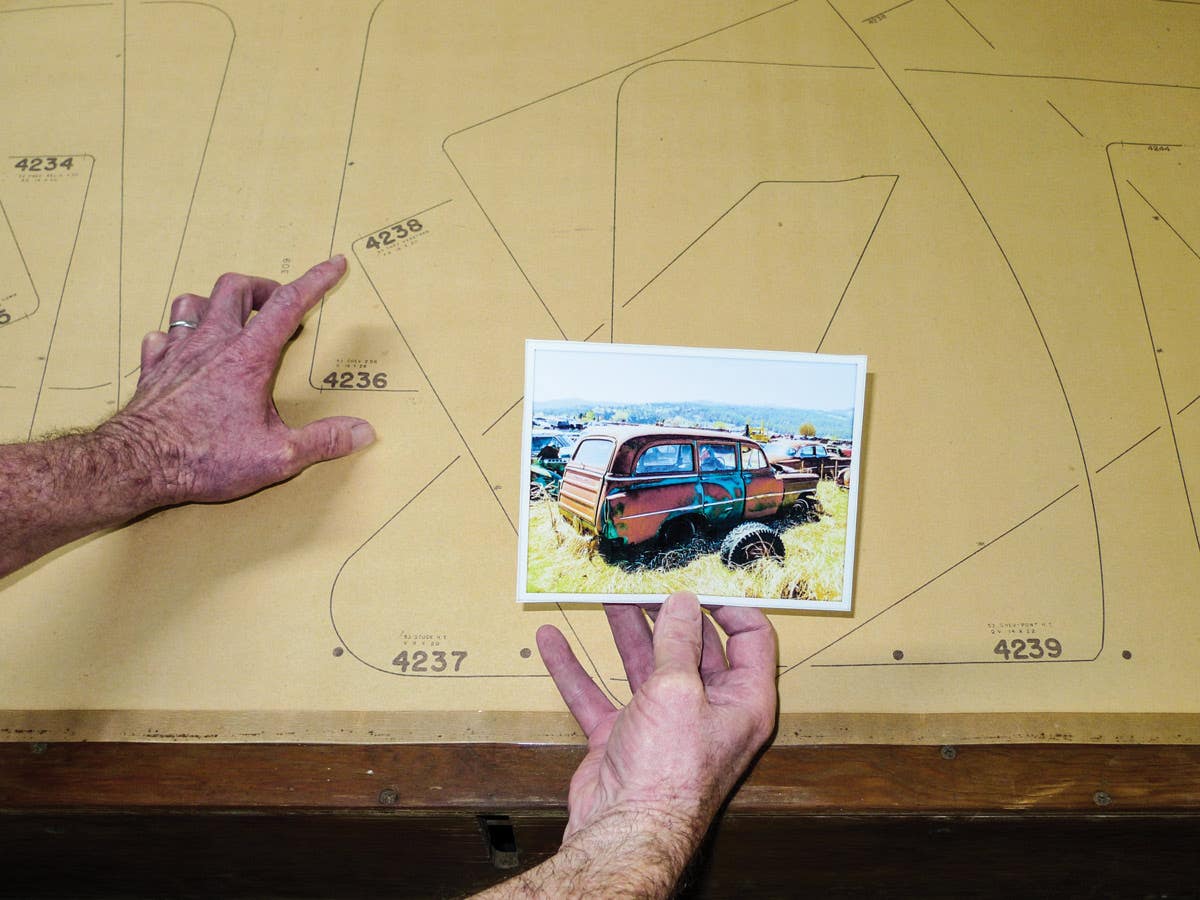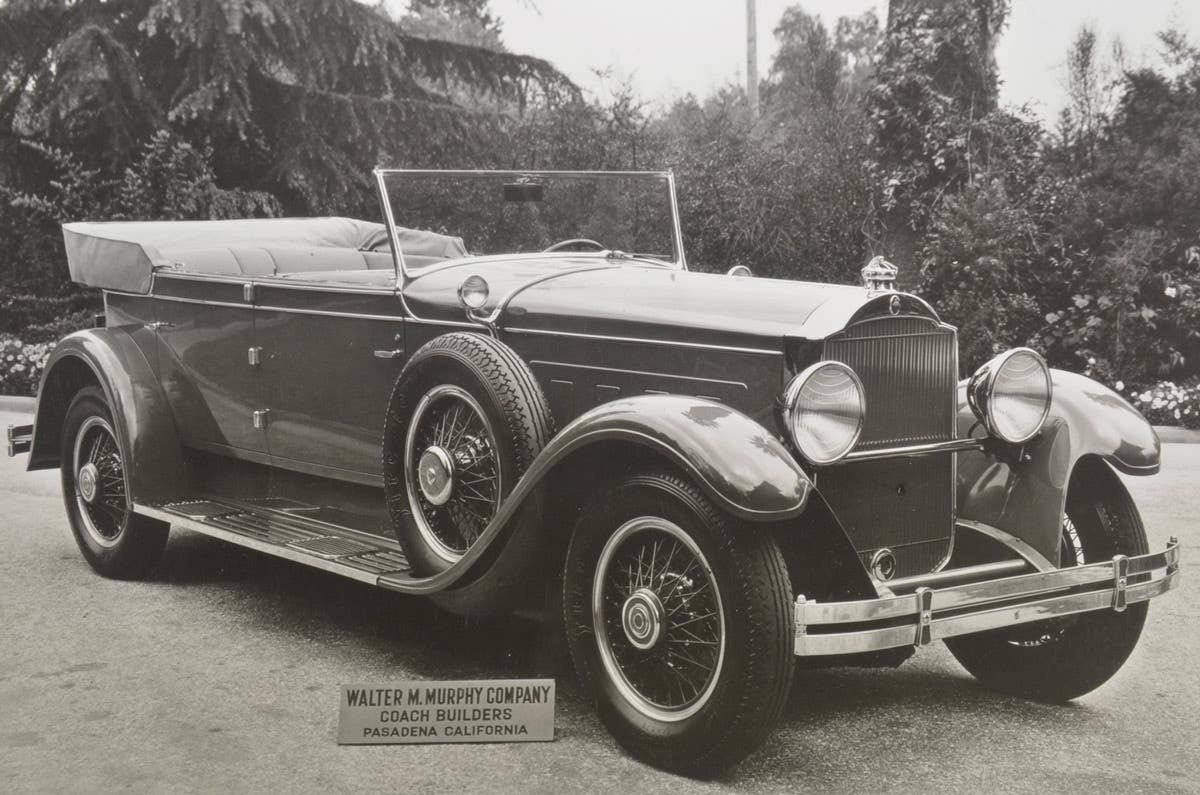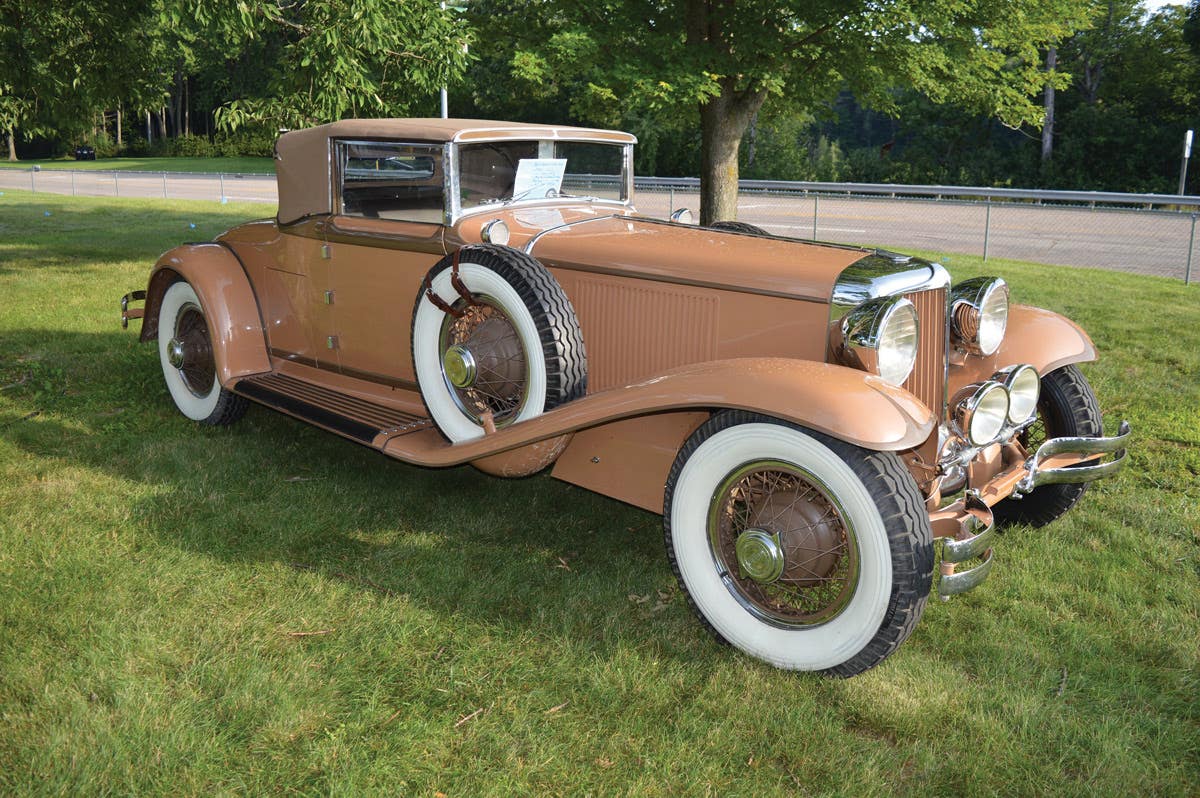Q. I just got the Feb. 7 issue and read it over lunch. I happen to own a 1928 Model 75 Gardner roadster. It was restored from a very complete car 30 years ago by my late father-in-law. The headlamp pictured looks identical to mine. Take a look at this closeup shot.
— John Gelfer, Shorewood, Wis.
A. Indeed, that’s the same style headlight as the one found by Gary Lawing. Apparently, Gardner used them for a few years in the late 1920s.
-------------------------------------------------------------
Q. I have a 1940s Chrysler product with a front wheel brake that has started “grabbing,” that is, when I press the brake pedal, one front wheel gets too much braking and tends to squeal or slide the tire. I removed the wheel and can see the inner side of the wheel is coated with something oily which has collected much road dust. I have had vehicles with conventional (DOT-1) fluid develop a leaky wheel cylinder, and the brake linings would get sticky. However, I did not know silicone (DOT-5) would also make the linings sticky. I thought that silicone would make the shoes slippery. Any comments please?
— D. Martin, via e-mail
A. Actually, I think most any foreign substance, including grease, on brake linings can cause a wheel to grab. I have no personal experience with silicon fluid, but I am of the impression that it is more likely to leak from wheel cylinders than glycerin-based (I think you mean DOT-3) fluid. You need to find the source of the errant substance and stop its migration to the linings. Then clean the drum and linings with brake cleaner. If fluid has completely permeated the linings, they may need to be replaced.
-------------------------------------------------------------
Q. In the Jan. 31 issue Ronald Hill from Arizona makes mention of several original applications of narrow Ford 9-inch rear ends preferred by hot rodders. Most builders of rods, and currently rat rods, have known for years that the 1957, ’58 and ’59 Ford Fairlanes, 300s and wagons, actually all passenger types, had the narrow 9-inch Ford that would all but bolt right under anything old. The writer mentions the 1958 thru ’60 T-Bird. Actually, the ’57 Thunderbird was the first to use the 9-inch as it was the first year in production and shares all the same dimensions as the passenger car, with the exception that the Thunderbird mounting pads are factory-installed with a different pitch because of the ’57 Bird’s short drive shaft. Little known to the general public, but well known among hot rod builders, is that the ’55 and ’56 T-Bird, as well as the ’55 and ’56 Ford and Mercury station wagons, used the Dana 44 rear end as it was stronger than both the Ford drop-out and pencil-grinder rear ends that Ford and Mercury offered in the standard series cars.
Also, the Dana 44 had a lower level pinion, which is more than likely where the Ford folks got the idea when they designed the 9-inch. Dirt track racers have known for years that the smaller series 1958 Edsels (Ranger & Pacer) used the same narrow 9-inch as the Fords, with the exception that they used the larger Mercury bolt pattern on the wheels which was preferred on dirt track cars that in turn would use the Mercury spindles and hubs on the front end. The larger series ’58 Edsels (Citation & Corsair) used the Mercury chassis and wider rear end. The 1959 Edsel was the only year that used the narrow Ford 9-nch rear. The early Broncos used a little wider 9-inch rear end in which one side axle was actually the same as one side in the narrowest 9-inch of earlier days.
There is a lot of information out there and occasionally more will surface, with some merely from someone’s memory and some by publication. One interesting fact is that various manufactures used different components in the same model vehicle depending where in the country it was built and what vendor was readily available (even then cost did matter). Therefore, one may have knowledge that others dispute as they have not heard of it in their part of the country. One thing is always stable and that is the Ford 9-inch as to what years and models would interchange. But then if building a rod of any kind and you cannot find that narrow 9-inch but there is a 1955 or ’56 Ford or Merc wagon rotting away in your area, use that as they are still out there. 1972 thru ’76 Jeep CJs also used a narrow Dana 44, but with the same wheel pattern as the Ford F-100 pickup so the axles could be re-drilled to your choice if all other searches fail.
— Tom Saelens, Darboy,Wis.
A. I knew someone in the rodding community would have further information. Thank you.
To submit questions to this column: E-mail angelo.vanbogart@fwmedia.com or mail to: Q&A, c/o Angelo Van Bogart, 700 E. State St., Iola, WI 54990-0001.
Got Old Cars?
If you don't subscribe to Old Cars Weekly magazine, you're missing out on the only weekly magazine in the car hobby. And we'll deliver 50 issues a year right to your mailbox every week for less than the price of a oil change! Click here to see what you're missing with Old Cars Weekly!
More Resources for Car Collectors:
- Classic car price guides, research, books, back issues of Old Cars Weekly & more
- Get expert restoration advice for your classic car
- Get car pricing, data and history all in one place
- Sign up for Old Cars Weekly's FREE email newsletter
- Need to buy or sell your classic car? Looking for parts or memorabilia? Search our huge online classified marketplace



